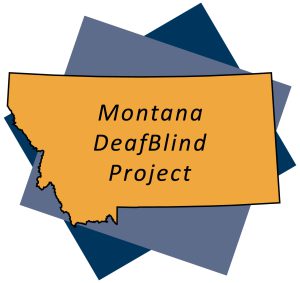What is DeafBlindness?
The term “DeafBlind” can be misleading. It implies the complete absence of vision or hearing. In reality, only about 6% of children who are DeafBlind are without any sight or hearing. While most individuals have some usable vision and/or hearing, no two children with DeafBlindness are alike. Sensory limitations are frequently associated with other disabilities. Individuals diagnosed with autism, Down syndrome, and physical disabilities such as cerebral palsy, for example, may also have vision and hearing losses that can go unnoticed due to the prominence of their other disabilities.
The loss of vision and hearing, even minor losses, can greatly impact development and learning. Children who are DeafBlind must be taught using strategies that are responsive to their individual sensory, cognitive, and physical skills. We encourage you to explore other areas of this website to gain more specific information about best educational practices for individuals who are DeafBlind.
Visit the National Center on DeafBlindness to learn more about the different ways DeafBlindness can be defined.
Who Qualifies for DeafBlind Services?
Children and youth (birth through 21 years of age) who are DeafBlind and on the DeafBlind Census are eligible for services from the Montana DeafBlind Project. To see if your child or student qualifies for services, please complete the Montana DeafBlind Census Form.
What is Technical Assistance?
The Montana DeafBlind project offers technical assistance (TA) for children and youth who are DeafBlind to parents and families, educational personnel, and service providers from state and community agencies.
TA may include:
- Professional development in the form of workshops, trainings, and conferences targeting specifics such as:
- Early identification and intervention
- Literacy and communication
- Assessment and planning
- Post-secondary transition
- Implementation of strategies that result in systems change
- Information and resource dissemination
- Support in the development of collaborative partnerships between families, service providers, and local education agencies.
- Individualized consultation to teams on a specific topic of need
What is the DeafBlind Census?
Since 1986, all state DeafBlind projects submit an annual National Child Count of Children and Youth who are DeafBlind (Birth-21). This census represents the most comprehensive registry of children with dual sensory loss. The registry provides critical information that helps inform the needs and activities provided by state projects, identifies research and professional development needs, as well as assists in targeting product development and dissemination. Visit the National Center on DeafBlindness to learn more ways the National Child Count matters.


